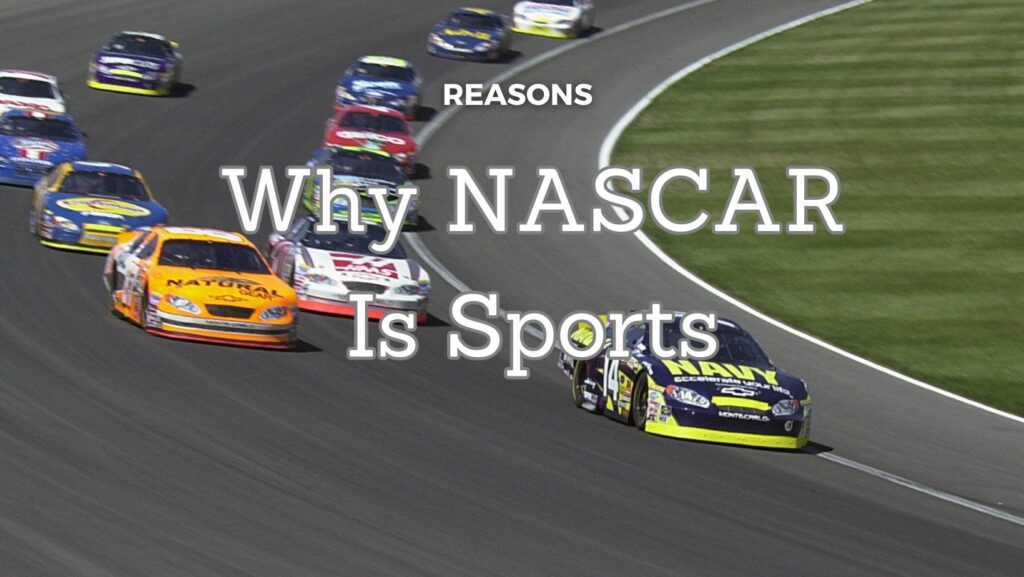Why NASCAR Is Sport: Myth & Facts in 2024
The ongoing debate about whether NASCAR should be considered a sport has sparked a lot of discussion among fans and critics. While some argue that it is merely a form of entertainment, there are compelling reasons to consider NASCAR a sport. In this article, we will explore five reasons that support NASCAR’s classification as a sport, including the physical demands on drivers, the strategic and tactical aspects of racing, the competitive nature of the sport, the athleticism required to endure long races, and the mental toughness needed to excel in high-pressure situations.
Main Reasons Why NASCAR Is Sports
The physical demands on drivers in NASCAR are immense, as they are required to withstand high speeds and intense G-forces for long periods of time. The endurance needed to cope with these demands is considerable, as drivers must endure extreme temperatures inside the car and maintain focus and control in high-pressure situations. For example, drivers experience high levels of physical stress on their neck and upper body due to the constant force and vibrations experienced during races. Additionally, the mental and physical stamina required to compete at this level is truly remarkable.

The Role of Mental Acuity in Racing
Mental acuity and focus play a pivotal role in the success of race car drivers. The demand for exceptional mental concentration and quick reaction times is paramount as they navigate the track at breakneck speeds, constantly assessing the ever-changing conditions and making split-second decisions to avoid accidents and gain a competitive edge.
The strategic decision-making involved in racing further underscores the importance of mental acuity. Elements such as pit stops and drafting require drivers to process complex information rapidly and make critical decisions under immense pressure. Every move, every adjustment, and every maneuver can impact the outcome of the race, making it crucial for drivers to maintain peak mental performance throughout the entire event.
See also : How to make a disc golf basket
It’s no exaggeration to say that split-second decisions can make or break a race. In the heat of competition, a driver’s quick reflexes and tactical choices can be the determining factors between standing on the winner’s podium or facing defeat. The ability to stay mentally sharp and focused under such intense circumstances is what sets the great drivers apart from the rest.
Consider the scenario of a driver approaching a tight corner at high speed. Their mental acuity comes into play as they calculate the optimal racing line, assess the grip levels, and anticipate the movements of other cars around them. These lightning-fast cognitive processes are what enable drivers to maintain control and make the right choices in the blink of an eye.
Role of Teamwork and Strategy in NASCAR Racing
When it comes to NASCAR racing, the thrill of speed and competition is only part of the equation. Behind every successful race, there lies a symphony of teamwork and strategic planning that propels drivers to victory.
NASCAR is not just about the driver behind the wheel; it’s a collaborative effort that involves an entire team working towards a common goal. The synergy between drivers, pit crews, and spotters is essential for success on the racetrack.
Drivers rely heavily on their pit crews to execute lightning-fast pit stops, where every second counts. The coordination and precision displayed by the pit crew during tire changes and refueling can make the difference between victory and defeat. Additionally, spotters play a critical role in providing real-time information to the driver, guiding them through traffic and potential hazards on the track. The seamless communication and trust between the driver and the spotter are vital for making split-second decisions that can impact the outcome of the race.
The strategic planning involved in setting up the car for optimal performance is a meticulous process that can make or break a race. Teams analyze data, track conditions, and weather forecasts to make informed decisions about car setup and race strategy.
From adjusting tire pressures to fine-tuning aerodynamics, every aspect of the car is meticulously calibrated to suit the unique demands of each race. Engineers and crew chiefs collaborate to develop a race strategy that maximizes the car’s potential throughout the race, accounting for factors such as fuel consumption, tire wear, and competition on the track.
The Competitive Nature and Skill Required
When it comes to adrenaline-pumping, high-speed competition, NASCAR racing stands out as one of the most thrilling and demanding sports in the world. The competitive nature of NASCAR racing and the exceptional skill required to compete at the highest level are key factors that have captivated fans and drivers alike for decades.
NASCAR racing is not for the faint of heart. The drivers who compete in this high-octane sport must possess a unique combination of fearlessness, precision, and split-second decision-making skills. The level of training and expertise needed to handle the intense speeds and close-quarters racing seen in NASCAR is unparalleled. Imagine hurtling around a track at speeds exceeding 200 mph, mere inches away from other cars, all while maintaining complete control and focus – this is the reality for NASCAR drivers.
To reach this level of skill and competitiveness, drivers undergo rigorous training both on and off the track. Physical fitness is paramount, as drivers need to withstand the G-forces experienced during races that can take a toll on the body. Additionally, mental toughness and sharp reflexes are honed through extensive practice and simulation exercises. Every movement, every decision, and every maneuver can make the difference between victory and defeat in NASCAR racing.
The Global Appeal of NASCAR
When it comes to motorsports, NASCAR stands out as a global phenomenon with a dedicated fan base that spans continents. The appeal of NASCAR extends far beyond the borders of the United States, captivating audiences worldwide with its adrenaline-pumping races, iconic drivers, and unique blend of speed and strategy. Let’s delve into the reasons behind NASCAR’s global reach and the unparalleled fan engagement that drives its success.
NASCAR’s popularity knows no bounds, drawing in fans from diverse backgrounds and cultures. The sport has evolved into a cultural phenomenon, attracting a dedicated following that transcends geographical boundaries. Whether it’s the thunderous roar of engines at Daytona International Speedway or the electrifying atmosphere at Talladega Superspeedway, NASCAR races have a magnetic pull that unites fans across the globe.
Beyond the thrill of the races, NASCAR wields a significant economic impact, generating revenue and creating job opportunities in host cities and beyond. The influx of fans, sponsors, and media coverage during NASCAR events injects vitality into local economies, showcasing the far-reaching influence of the sport. Furthermore, the extensive media coverage of NASCAR races ensures that fans worldwide can tune in to witness the excitement unfold, amplifying the sport’s global appeal.
Wrapping Up
In conclusion, NASCAR is undeniably a sport that demands physical, mental, and technical prowess. The combination of athleticism, skill, strategy, and competition places NASCAR on par with other recognized sports. So, the next time someone questions whether NASCAR is a sport, you can confidently explain why it is indeed a thrilling and challenging athletic endeavor.






